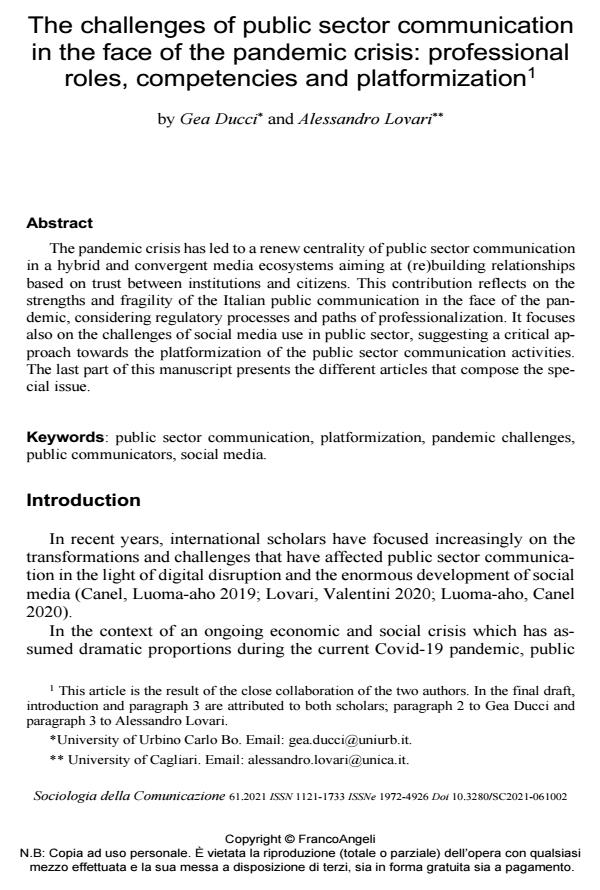The challenges of public sector communication in the face of the pandemic crisis: professional roles, competencies and platformization
Titolo Rivista SOCIOLOGIA DELLA COMUNICAZIONE
Autori/Curatori Gea Ducci, Alessandro Lovari
Anno di pubblicazione 2021 Fascicolo 2021/61
Lingua Inglese Numero pagine 11 P. 9-19 Dimensione file 260 KB
DOI 10.3280/SC2021-061002
Il DOI è il codice a barre della proprietà intellettuale: per saperne di più
clicca qui
Qui sotto puoi vedere in anteprima la prima pagina di questo articolo.
Se questo articolo ti interessa, lo puoi acquistare (e scaricare in formato pdf) seguendo le facili indicazioni per acquistare il download credit. Acquista Download Credits per scaricare questo Articolo in formato PDF

FrancoAngeli è membro della Publishers International Linking Association, Inc (PILA)associazione indipendente e non profit per facilitare (attraverso i servizi tecnologici implementati da CrossRef.org) l’accesso degli studiosi ai contenuti digitali nelle pubblicazioni professionali e scientifiche
The pandemic crisis has led to a renew centrality of public sector communica-tion in a hybrid and convergent media ecosystems aiming at (re)building relation-ships based on trust between institutions and citizens. This contribution reflects on the strengths and fragility of the Italian public communication in the face of the pandemic, considering regulatory processes and paths of professionalization. It focuses also on the challenges of social media use in public sector, suggesting a critical approach towards the platformization of the public sector communication activities. The last part of this manuscript presents the different articles that com-pose the special issue.
Parole chiave:public sector communication, platformization, pandemic challenges, public communicators, social media.
- Infodemic Disorder Alessandro Lovari, Marinella Belluati, pp.65 (ISBN:978-3-031-13697-9)
- Exploring the Challenges of Generative AI on Public Sector Communication in Europe Alessandro Lovari, Fabrizio De Rosa, in Media and Communication 9644/2025
DOI: 10.17645/mac.9644
Gea Ducci, Alessandro Lovari, The challenges of public sector communication in the face of the pandemic crisis: professional roles, competencies and platformization in "SOCIOLOGIA DELLA COMUNICAZIONE " 61/2021, pp 9-19, DOI: 10.3280/SC2021-061002